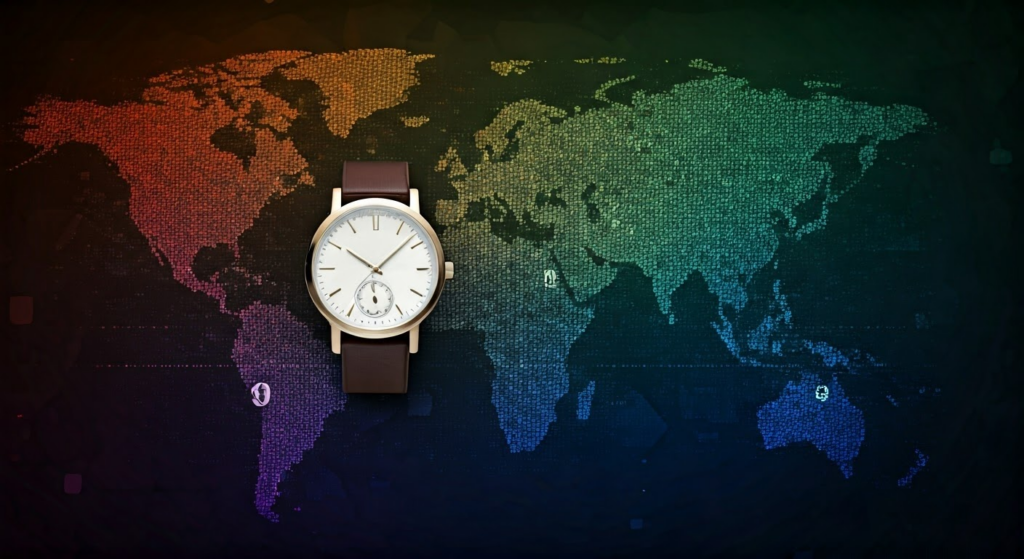Impact of Menace Tariffs on Watches: A Comprehensive Analysis

Key Highlights
- Former President Donald Trump’s proposed tariffs on goods from China, Mexico, and Canada sent shockwaves through international markets and raised concerns about a potential trade war.
- The tariffs, a key part of Trump’s “America First” agenda, were aimed at reducing the trade deficit and encouraging domestic production.
- Economists warned that the tariffs could lead to higher prices for consumers, disruptions to supply chains, and retaliatory measures from affected countries.
- The watch industry, heavily reliant on global trade, braced for potential disruptions and price hikes as a result of the tariffs.
- The tariffs’ long-term impact remains uncertain, but they underscore the complex relationship between trade policy, global economics, and domestic politics.
Introduction
Former President Donald Trump’s strong trade policies shocked the global market. They raised worries about a possible trade war. The United States, during Trump’s time, placed tariffs on billions of dollars of goods from China, Mexico, and Canada, impacting total exports significantly. This was done to try to lower the trade deficit and to protect American jobs. These decisions affected many industries. The watch industry, which depends a lot on global trade, felt the impact too.
The Genesis of Menace Tariffs on Watches

The “menace tariffs” started because of President Donald Trump’s “America First” promises during his first term. Trump often said he would be tough on trade. He believed other countries were taking advantage of the United States and hurting American jobs.
This protectionist view pushed Trump to use trade powers that were not often used before. He decided to impose tariffs on many goods from key trading partners like China, Mexico, and Canada. His administration said this was needed for national security and to fix unfair trade practices. The tariffs first focused on steel and aluminum imports. Then, they quickly grew to include other products, like watches.
Understanding the Rationale Behind Imposing Tariffs
The idea behind the tariffs pushed by the Trump administration was complicated. They mainly said that the United States had been facing trade deficits with countries like China for too long. This made them feel that American jobs and industries were not getting a fair chance.
The administration thought the tariffs on foreign goods would help protect American industries from unfair competition. They aimed to boost manufacturing at home and create more jobs. By raising the prices of foreign goods, they believed American consumers would buy more products made in the United States. This would help refresh the American supply chain.
Yet, critics argued that these tariffs would harm American consumers and businesses in the end. They warned about higher prices, broken supply chains, and possible retaliatory tariffs from other countries.
Initial Responses from the Watch Industry
The watch industry depends a lot on global supply chains and access to international markets. It quickly expressed concerns about how tariffs could negatively affect them. Leaders in the industry said that tariffs on imported watches and parts would likely lead to higher prices for American consumers. They worried this might lower consumer demand and hurt sales, especially for entry-level and mid-range watches that many people like.
Experts also noted that the tariffs could disrupt the supply chains that watchmaking relies on. Many American watch brands get parts from different countries. The tariffs could break the smooth flow of these materials, causing delays in production and higher costs.
Overall, the industry response to the tariffs was filled with worry and uncertainty. Many businesses, while trying to figure out the effects on their operations, wanted a trade policy that wouldn’t hurt American companies and consumers.
Analyzing the Direct Impact on Watch Prices and Availability
The new tariffs changed the prices and availability of watches in the United States. The effects varied based on where the watches came from and the type, but prices generally went up, especially for watches from China.
These tariffs also caused uncertainty in the market. This affected both consumers and businesses. Consumers had to choose between paying the higher prices or waiting to buy, hoping things would improve later. Businesses needed to find ways to deal with the higher costs caused by tariffs without upsetting their customers.
Price Fluctuations: Short-Term vs. Long-Term Effects
In the immediate aftermath of the tariffs, the US economy witnessed a surge in prices across a range of products, including watches. This was primarily due to the increased cost of imported goods. The Commerce Department reported a surge in import prices, which inevitably translated into higher retail prices for consumers. For instance, watches imported from China, a major manufacturing hub for several watch brands, saw a significant price hike due to the tariffs.
However, the long-term impact of the tariffs on the US economy, particularly on watch prices, remained uncertain. While the initial shock led to price increases, the long-term effects depended on several factors, including the duration of the tariffs, the ability of businesses to find alternative sourcing options, and the response of consumer demand. The uncertainty injected by the tariffs prompted many businesses to adjust their strategies. Some companies chose to absorb the increased costs to remain competitive, while others opted to pass the cost onto consumers through higher prices.
| Watch Type | Short-Term Price Change | Long-Term Price Change (Estimated) |
|---|---|---|
| Swiss Watches | +5-10% | Stable to slight increase |
| Japanese Watches | +3-7% | Stable to slight increase |
| Chinese Watches | +10-20% | Potentially moderate increase |
| American Watches | Minimal to no change | Potentially stable or slight increase |
How Availability Is Affected by Tariffs
Tariffs changed how many watch models and brands are available in the US market. As American companies faced higher costs for imports, some decided to bring in fewer models. They chose to focus on those that were in high demand and made the most profit. This meant that certain watch models, especially those that are cheaper, became less available.
The problem grew because many American companies depend on parts from their top trading partners, which are now also under tariffs. Supply delays for these parts, due to extra checks and rules at customs, made it hard for them to keep production on schedule. This further affected how many finished watches could be found in the US.
Though the tariffs aimed to help American manufacturing, they created a supply issue in the watch industry right away. The uncertainty about future trade deals and more possible tariffs made it risky for businesses. As a result, they chose to be cautious. Instead of expanding production, they decided to wait and see what would happen next.
Broader Economic Implications for the United States

The tariffs put in place by the Trump administration affected watch prices and availability. They also had wider effects on the United States. The administration said the tariffs were needed to protect jobs and industries in America. But critics warned they could actually hurt the US economy.
One key point against the threat of tariffs is that they might make prices higher for consumers. This could slow down economic growth. There were also worries about other countries hitting back with their measures. This could hurt American businesses that depend on exports. It might also disrupt supply chains around the world.
Effects on Trade Relations with Major Watch Exporting Countries
The tariffs caused problems for trade between the United States and important watch-exporting countries like China, Switzerland, and Japan. Experts in trade said that President Trump’s goal was to lower the trade deficit and bring jobs back to the US. However, these actions also might have started a trade war that could hurt everyone involved.
The tariffs created arguments between the US and its trade partners, with countries like China responding by putting tariffs on American goods. This back-and-forth added more uncertainty to the global market without fixing the main trade issues.
Many experienced lawyers in international trade worried that President Trump’s methods looked at quick political wins but ignored the long-term health of the global trading system. They believed that these tariffs might weaken the trading rules that helped the global economy grow for decades and could create a more divided and unpredictable world stage.
Potential Retaliatory Measures and Their Consequences
The tariffs imposed by the United States led to quick reactions from major trading partners like Canada, Mexico, and the European Union. Canadian Prime Minister Justin Trudeau showed disappointment over these tariffs. He announced retaliatory tariffs and levies on several American goods as well as on Canadian goods coming into Canada. These tariffs were mainly seen as a response to President Trump’s decision to impose tariffs on Canadian steel and aluminum. They focused on industries in key states that could influence elections, trying to put pressure on Trump’s administration.
Mexican President Claudia Sheinbaum also criticized the tariffs. She announced retaliation that targeted American farm products. This move could hurt farmers in states important to Trump’s base. The trade problems with Mexico were made worse by Trump’s push to build a border wall, which Mexico refused to pay for. This increased tensions between the two countries.
Experts said that these retaliatory measures, including blanket tariffs, might harm all the economies involved. The Canadian economy, which relies heavily on trade with the United States, could face a slowdown because of the growing trade war, particularly impacting industries that depend on cross-border supply chains, like the automotive sector, by the middle of next year.
Conclusion
In conclusion, the impact of tariffs on watches has changed the watch industry a lot. Price changes and worries about availability are direct issues for trade and the economy. Knowing why these tariffs exist helps us see how the industry responds and the possible counteractions. Dealing with short-term price changes and long-term availability problems needs a smart strategy. The effects of these tariffs go beyond just prices. They also affect global trade. To learn more about which watch types are affected and to find answers to common questions, check out the detailed analysis provided.
Frequently Asked Questions
What specific types of watches are affected by these tariffs?
Tariffs affect many types of watches. However, luxury watches, smartwatches, and those with parts from countries hit by steep tariffs will likely have the biggest price hikes. Shoppers in places like Montreal, where many people love watches, might really feel this increase when they try to buy specific models.
https://truthsocial.com/@realDonaldTrump/113546215051155542
https://www.whitehouse.gov/articles/2025/02/reciprocal-trade-and-tariffs
https://www.canada.ca/en/services/taxes/excise-taxes-duties-and-levies/digital-services-tax.html
https://ca.news.yahoo.com/ambassador-says-u-recognizes-canadas-011138805.html
https://www.whitehouse.gov/presidential-actions/2025/01/america-first-trade-policy

Leave a Reply